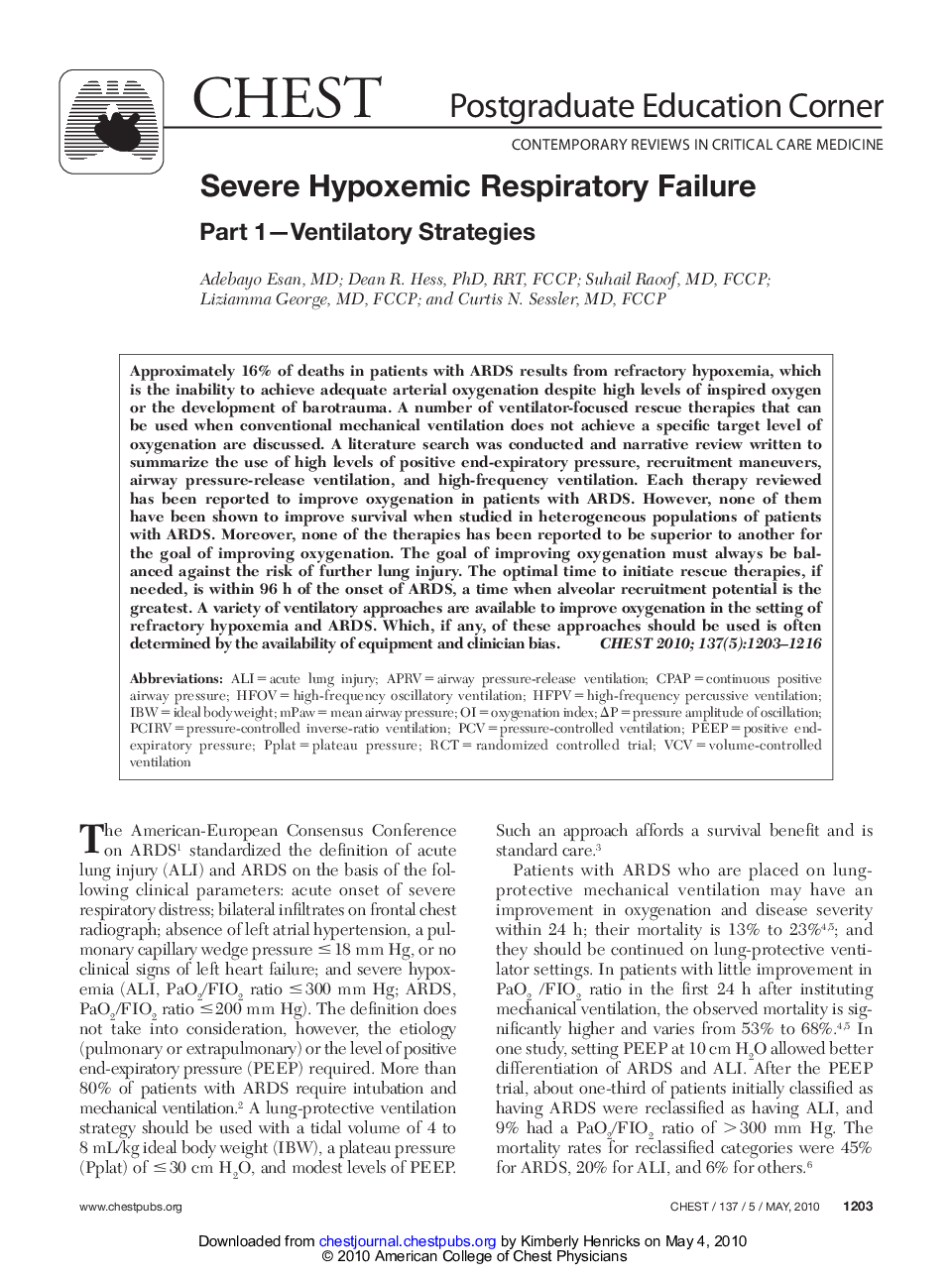| کد مقاله | کد نشریه | سال انتشار | مقاله انگلیسی | نسخه تمام متن |
|---|---|---|---|---|
| 2901497 | 1173352 | 2010 | 14 صفحه PDF | دانلود رایگان |

Approximately 16% of deaths in patients with ARDS results from refractory hypoxemia, which is the inability to achieve adequate arterial oxygenation despite high levels of inspired oxygen or the development of barotrauma. A number of ventilator-focused rescue therapies that can be used when conventional mechanical ventilation does not achieve a specific target level of oxygenation are discussed. A literature search was conducted and narrative review written to summarize the use of high levels of positive end-expiratory pressure, recruitment maneuvers, airway pressure-release ventilation, and high-frequency ventilation. Each therapy reviewed has been reported to improve oxygenation in patients with ARDS. However, none of them have been shown to improve survival when studied in heterogeneous populations of patients with ARDS. Moreover, none of the therapies has been reported to be superior to another for the goal of improving oxygenation. The goal of improving oxygenation must always be balanced against the risk of further lung injury. The optimal time to initiate rescue therapies, if needed, is within 96 h of the onset of ARDS, a time when alveolar recruitment potential is the greatest. A variety of ventilatory approaches are available to improve oxygenation in the setting of refractory hypoxemia and ARDS. Which, if any, of these approaches should be used is often determined by the availability of equipment and clinician bias.
Journal: Chest - Volume 137, Issue 5, May 2010, Pages 1203–1216